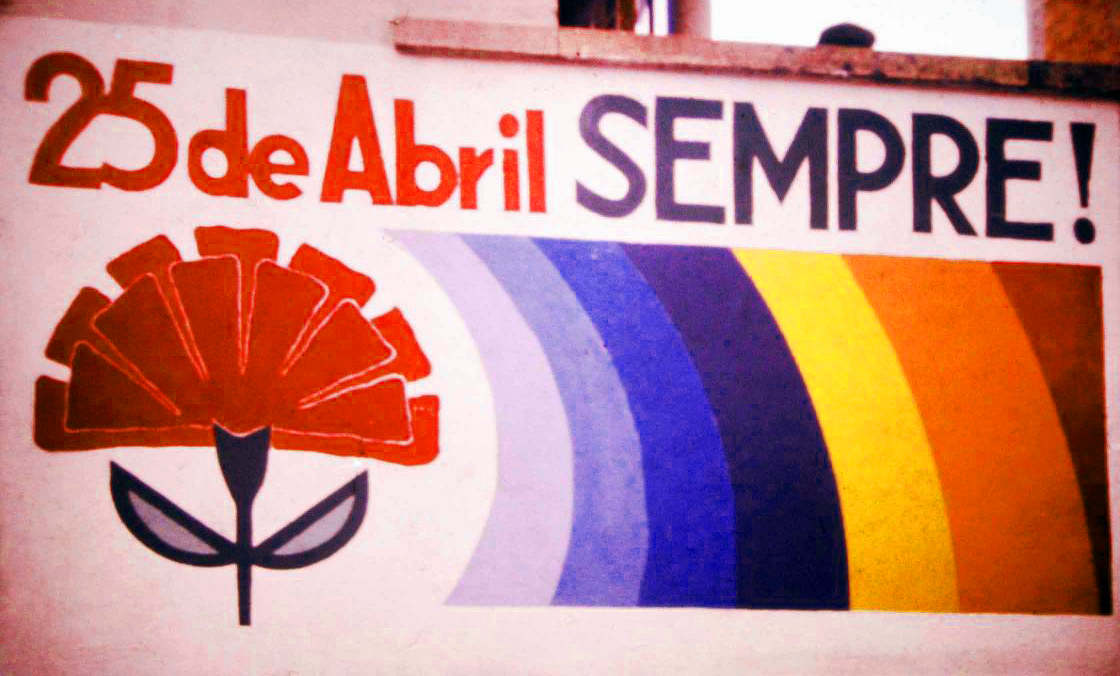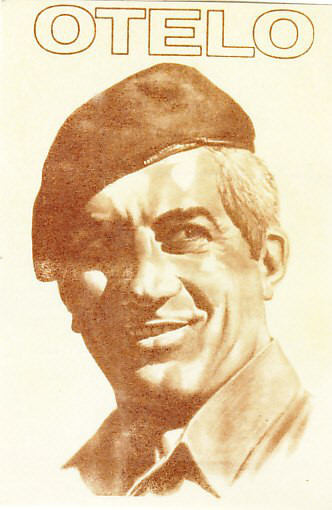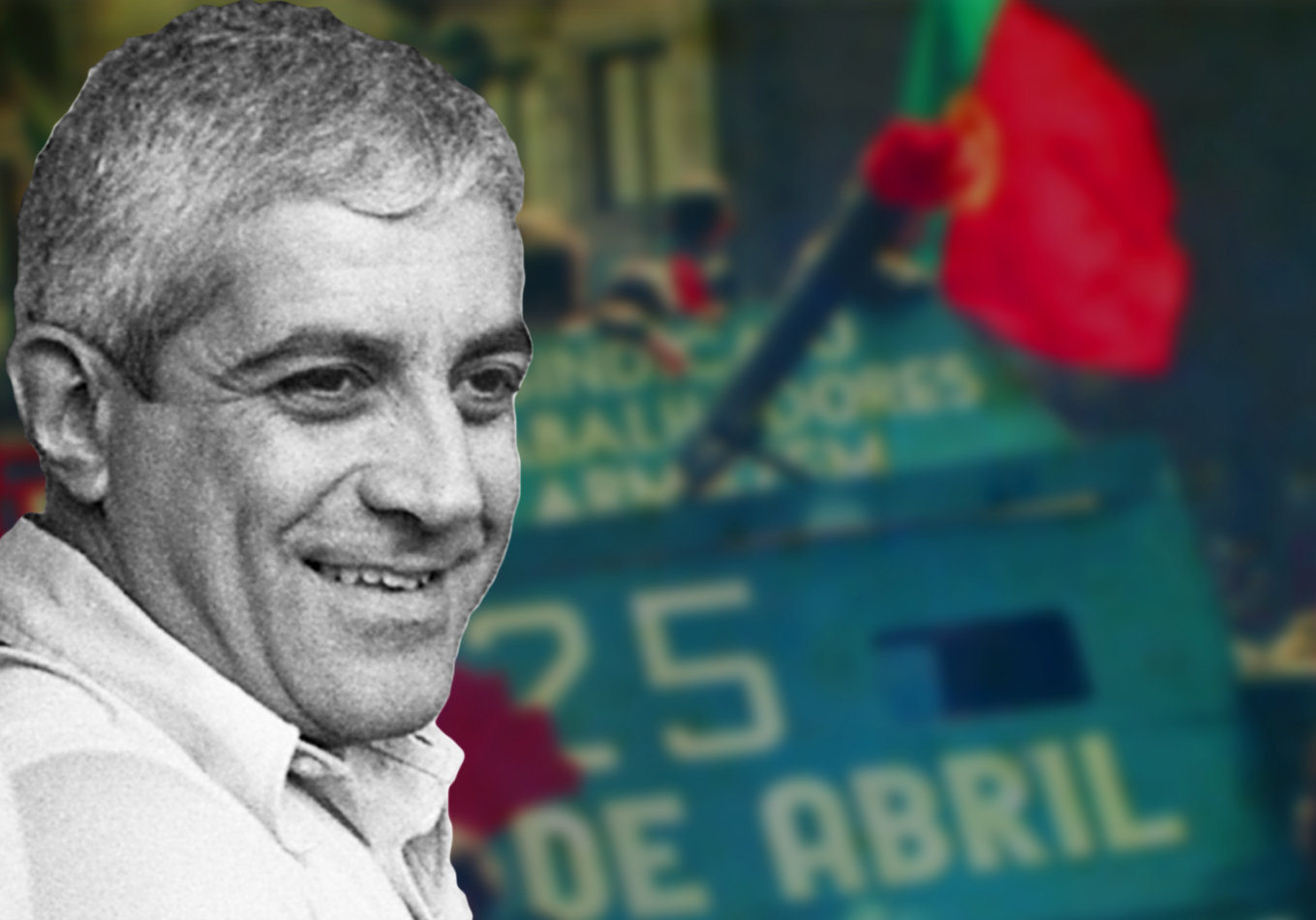Otelo Nuno Romão Saraiva de Carvalho died last month. As a young army major, Otelo planned and coordinated the military coup of 25 April 1974 against the Estado Novo dictatorship in Portugal, despite the fact that the army had previously been one of its main pillars of support. What Otelo could not foresee was that the masses would surge onto the stage of history through the breach that the 25 April coup created at the very core of the bourgeois state. This date therefore also marked the beginning of the Portuguese Revolution.
Since then, a myth has been concocted that the Portuguese Revolution was solely down to the actions of a handful of benevolent military officers. This falsehood conveniently sidelines the key role of the masses, whose actions were decisive in determining the course of the revolution.
Otelo and the MFA
Otelo Saraiva de Carvalho was born in Portuguese Mozambique in 1936 to a lower-middle-class Luso-Goan family. He enrolled in the Military Academy in Lisbon aged nineteen and moved up the ranks of the army in the course of the colonial wars in Angola and Guinea-Bissau.
It was in the course of these campaigns that a profound anti-war sentiment developed among not only the ordinary soldiers, but also the middle layers of the officer caste. These sentiments clearly affected Otelo.
Whilst the wars were increasingly becoming a lost cause for the Portuguese military, the decaying Estado Novo regime was clinging desperately to the colonies that it occupied as a bulwark of its rule, in both an economic and geopolitical sense. Something had to give.
The final straw came when the regime announced that university graduates installed as officers in the army could be fast-tracked for promotion. This was one kick in the teeth too many for the career military men from the Academy. Not only were they fighting an unwinnable war with an utterly demoralised, and often mutinous army, they now found their career paths in the army blocked by the government. The only way they could look was down, at the discontent brewing in the ranks beneath them.
From here rose the Movimento das Forças Armadas (MFA), the Armed Forces Movement: a group of officers whose leadership developed around Vasco Lourenço, the communist-influenced Vasco Gonçalves, and the master-strategist, Otelo. It began preparing a military insurrection against the 48-year-old dictatorship.
The coup and the revolution
The coup intended to overthrow the dictatorship, and to somehow resolve the colonial war in Angola, Guinea-Bissau, and Mozambique, which included plans to renew the subjugation of the colonies by less direct means. One of its main protagonists – we might even call him a hero of that event – was Major Otelo Saraiva de Carvalho, who, alongside the many others who joined him, risked his career and even his life on 25 April.
But the Portuguese workers did not remain passive during these events. Despite the instructions of the MFA to stay at home, millions of men and women took to the streets to take their destinies into their own hands.
After the MFA fearfully handed power to António de Spinola and the other Generals of the Junta de Salvação Nacional (National Salvation Junta, which assumed effective political leadership of Portugal after the coup), the masses did not wait for the latter to decide their fate.
Instead, they attacked the PIDE (secret police); freed political prisoners, and in the following days and weeks began vying for control of the factories, workplaces, and barracks.
Among the figures of 25 April mythologised by the ruling class, we find sworn enemies of the revolution. It ought to come as no real surprise that the current António Costa government invited the Thermidorian General and former President António Ramalho Eanes to chair the commission charged with commemorating the 50th anniversary of 25 April. This is the man who crushed the left-wing of the MFA during their attempt to seize power on 25 November 1975.
 The 25 April 1974 is celebrated as the day the Estado Novo regime was brought down. In reality there were two "25 Aprils" – the coup led by junior officers, and the revolution which erupted that day on the streets / Image: Henrique Matos
The 25 April 1974 is celebrated as the day the Estado Novo regime was brought down. In reality there were two "25 Aprils" – the coup led by junior officers, and the revolution which erupted that day on the streets / Image: Henrique Matos
However, there were key actors in the MFA leadership who were genuinely drawn to the mass popular movement, precisely at the moment when the latter was seeking a way to realise its aspirations. Otelo was one such figure, whose sympathy for the revolution only grew as the pressure of the masses increased.
The role these officers had played in ending the Estado Novo regime meant that the same MFA leaders found themselves holding the reins of power precisely when a movement of millions of exploited and impoverished people was out in the streets and in the fields.
Although the coup leaders initially handed power over to their military superiors, wave after wave of the revolutionary movement pushed them to go far beyond their initial plans. They were pushed increasingly to the left. The absence of a revolutionary leadership among the main workers’ parties prepared to lead the workers, youth, and peasantry to the direct seizure of power only reinforced the sense of revolutionary authority thrust upon figures like Otelo.
The fundamental factor driving events was the objective need for a social transformation to clear away the old order. This was above all expressed by the movement of the masses.
For their part, the young military officers were ultimately balancing between the class forces in society. On the one hand, they filled the vacuum left by the old bourgeois regime, which had disintegrated after the slightest push. On the other hand, they were compelled to carry out measures that benefitted the struggling masses, not least to mitigate the economic crisis exacerbated by the counter-revolutionary measures of the big capitalists.
But whilst the transitional governments were forced to cede repeatedly to the will of the masses during the revolutionary process, the lack of a clear, conscious revolutionary leadership meant this process could not be carried through to the end. In the course of a revolution that they simply did not understand, these young officers simply ended up “giving the gold to the bandit”, as they saw it.
Otelo and COPCON
Otelo and the soldiers around him played a contradictory role after 25 April. Following the coup, with the PSP [police] completely paralysed, and the GNR [national guard], hated and unable to intervene, the ‘COPCON’ was created. This was a centralised military command encompassing all the special units of the armed forces. Its aim was to maintain order – its commander was Otelo.
COPCON was used on numerous occasions against the workers, in accordance with its stated aim. It is enough to remember the intervention against the strike of TAP workers in August 1974, in which troops commanded by Jaime Neves occupied the premises, with all the workers being placed under the jurisdiction of the Military Discipline Regulation (RDM). Under that RDM, 200 workers were dismissed, and seven were called on to testify before the military authorities.
We could also recall the siege of Lisnave, when roads were blockaded in September 1974 to prevent Lisnave workers from marching to Lisbon. Or when COPCON was sent in to disperse the demonstration of construction workers that had surrounded the Constituent Assembly in November 1975.
In general, however, the mass movement was too powerful for open repression to be conducted on a larger scale. ‘Order’ – as the officers conceived it – could not be established and maintained in the course of the revolution.
Despite ostensibly playing the role of armed bodies of men for the protection of the capitalist order, the soldiers, who were in daily contact with their fellow workers in struggle, felt an irresistible sympathy and attraction to the latter and often refused to intervene.
More often than not they ended up fraternising with the same workers. This atmosphere of class solidarity also had an effect on Otelo and others who had taken up key positions in the state. Otelo often took some action with the intention of limiting the movement of the class struggle in some way, but ended up riding an even greater wave of struggle that ensued.
There were even instances – particularly in the land occupations of the Alentejo – when COPCON would be used to defend workers and peasants against strikes of capital. This was necessary in a sense to prevent wider damage to the Portuguese economy, but it also exemplified the manner in which the bonapartist MFA would occasionally substitute itself for both the armed, independent working-class movement, as well as for the now collapsed bourgeois state in the course of the revolution.
Otelo and the revolution
Otelo concentrated enormous political and military power in his hands. In addition to commanding COPCON, he was also part of a short-lived triumvirate composed of Generals Costa Gomes (president of the republic), Vasco Gonçalves (head of the government), and himself. This triumvirate was Portugal’s highest authority for a time.
However, in the end he ended up using all the power that he had concentrated in his hands to lead COPCON in its actions against the workers, and to reinstate the Thermidorian Colonel Jaime Neves, who would later lead the crushing of left-wing regiments that attempted a rising on 25 November 1975.
 Otelo's legacy is contradictory. He was pushed to the left and his sympathies were with the masses, yet it was also he who was called upon initially to restore "Order". In the end, however, the ruling class in Portugal will never forgive him for precipitating a revolutionary movement through his actions / Image: EPHEMERA
Otelo's legacy is contradictory. He was pushed to the left and his sympathies were with the masses, yet it was also he who was called upon initially to restore "Order". In the end, however, the ruling class in Portugal will never forgive him for precipitating a revolutionary movement through his actions / Image: EPHEMERA
The tumult of the revolution pushed the officers who had led the coup into conflict with one another. The MFA was an amorphous body created for the specific purpose of conducting the 25 April coup. It had no single, organic social base within society, and under the pressure of the revolution, it began fracturing and splitting apart, roughly along class lines. Some shifted further to the right, even conspiring to conduct coups d’etat against the revolution. Others, such as Otelo, moved to the left, often demonstrating sympathy for the popular movement.
For this reason, the right hates him. This is the same hypocritical right wing that, throughout the revolution, conspired to commit and actually committed terror attacks on the headquarters of leftist parties and trade unions; murdered leftist militants; organised armed militias of ex-PIDE [secret police] officers and far-right thugs, and that sought to convince the dying dictator of Spain, Franco, to intervene and drown the Portuguese Revolution in blood.
However, in the absence of a revolutionary leadership and given the policies of the PS (Socialist Party) and PCP (Communist Party), even this mighty revolution was not enough to break the military hierarchy and the ties between officers, forged in Africa during the long commissions in the colonial war.
On 25 November 1975 – the “Thermidor” of the Portuguese revolution, in which the right wing of the MFA moved against the left – Otelo abandoned his commanders, went home and surrendered in Belém to General Costa Gomes, president of the republic and former supreme head of the armed forces of the dictatorship, ending up in detention.
Despite his sympathies with the mass movement, Otelo never stood fully and unambiguously on the side of the working class, and was ultimately defeated by the most reactionary wing of the MFA.
However, many among the ruling class will never forgive Otelo for precipitating a revolutionary movement of millions that brought capitalism in Portugal to the brink of destruction.
Correctly or incorrectly, this is what he continues to represent in the eyes of many on the left, and this is the part of his legacy we defend. So, at the time of his death, let us honor the brave officer who helped to bring down the dictatorship. But as we pay respects to the man, let us also bury the myth.

